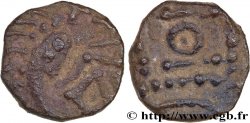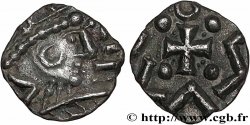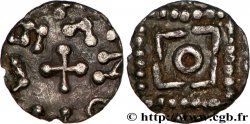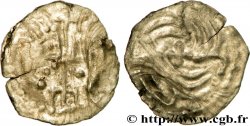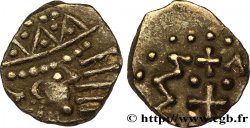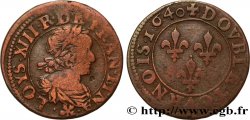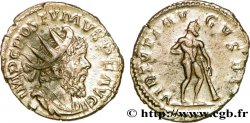bmv_227641 - ENGLAND - ANGELSASSCHE Sceat continental à l’oiseau, Série E, variété K
Nicht verfügbar.
Artikel auf unserem Online-Shop verkauft (2010)
Preis : 130.00 €
Artikel auf unserem Online-Shop verkauft (2010)
Preis : 130.00 €
Type : Sceat continental à l’oiseau, Série E, variété K
Datum: c. 695-740
Name der Münzstätte / Stadt : Dorestad ou Quentovic
Metall : Silber
Durchmesser : 12 mm
Stempelstellung : 12 h.
Gewicht : 0,91 g.
Seltenheitsgrad : R2
Kommentare zum Erhaltungszustand:
Très belle petite monnaie, bien frappée et centrée, mais sur un flan un tout petit peu court et concrétionnée par endroit. Sinon très belle patine irisée de médaillier
N° im Nachschlagewerk :
Vorderseite
Titulatur der Vorderseite ANÉPIGRAPHE.
Beschreibung Vorderseite Un oiseau de profil à droite ; une petite croisette et un globule sous la tête.
Rückseite
Titulatur der Rückseite TRACES DE LÉGENDE.
Beschreibung Rückseite Carré perlé, avec un annelet pointé au centre ; dans les angles, quatre traits horizontaux.
Kommentare
Bien que traité “à la mérovingienne”, l’oiseau du droit prend sans doute son inspiration dans le bestiaire des monnaies gauloises (cf. les bronzes à l’aigle des Carnutes ou des Sénons). D. M. Metcalf illustre le bronze LT. 6108 comme prototype (cf. page 206 de son ouvrage).
Cet exemplaire n’a pas les deux groupes de trois globules qui accostent habituellement l’annelet central.
Although treated “in the Merovingian style”, the bird of the right probably takes its inspiration from the bestiary of Gallic coins (cf. the bronze eagles of the Carnutes or the Senones). DM Metcalf illustrates the bronze LT. 6108 as a prototype (cf. page 206 of his work). This example does not have the two groups of three globules which usually flank the central annulet
Cet exemplaire n’a pas les deux groupes de trois globules qui accostent habituellement l’annelet central.
Although treated “in the Merovingian style”, the bird of the right probably takes its inspiration from the bestiary of Gallic coins (cf. the bronze eagles of the Carnutes or the Senones). DM Metcalf illustrates the bronze LT. 6108 as a prototype (cf. page 206 of his work). This example does not have the two groups of three globules which usually flank the central annulet








 Berichten über einen Fehler
Berichten über einen Fehler Die Seite drucken
Die Seite drucken Teilen meiner Auswahl
Teilen meiner Auswahl Stellen Sie eine Frage
Stellen Sie eine Frage Einlieferung/Verkauf
Einlieferung/Verkauf
 Details
Details